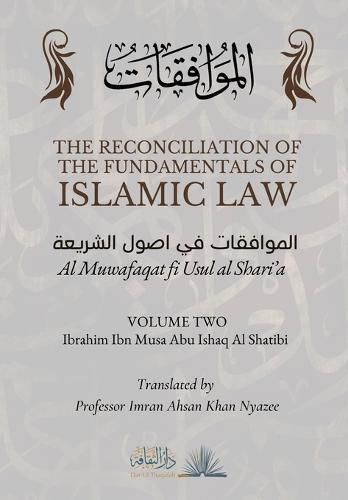Readings Newsletter
Become a Readings Member to make your shopping experience even easier.
Sign in or sign up for free!
You’re not far away from qualifying for FREE standard shipping within Australia
You’ve qualified for FREE standard shipping within Australia
The cart is loading…






This title is printed to order. This book may have been self-published. If so, we cannot guarantee the quality of the content. In the main most books will have gone through the editing process however some may not. We therefore suggest that you be aware of this before ordering this book. If in doubt check either the author or publisher’s details as we are unable to accept any returns unless they are faulty. Please contact us if you have any questions.
First published in 1884 in Tunis, The Reconciliation of the Fundamentals of Islamic Law (or al-Muwafaqat fi Usul Al-Sharai'a), written by Ibrahim ibn Musa Abu Ishaq al-Shatibi, was an innovation in Islamic jurisprudence. It was the first book to address the objectives of the shari'a. The difficulty that some may find in comprehending some of its parts may be attributed to the fact that it was the first time that the codification of the maqasid or objectives of the shari'a was undertaken.
The book has been a source of inspiration, moderation, and renewal in fiqh. However, it deals with much more than the maqasid, and substantial research is needed to unravel its full contribution.
The Author described the contents of his book as follows: When the concealed secrets began to be revealed...I started collecting their unique meanings...I did this to the extent of my ability and strength, while elaborating the purposes of the Book (Qur'an) and the Sunna...organizing these precious gems and gathering these benefits into meanings that have re-course to the principles helping in their comprehension and attachment, and I merged them with the interpretation of principles of fiqh and organized them on a shining and radiant string. The resulting book is divided into in five parts: the fundamental concepts of the discipline; the ahkam (rules) and what is related to them; the legal purposes of the shari'a and the ahkam related to them; the comprehensive treatment of the adilla (evidences); and the rules of ijtihad and taqlid.
The translation of the third part, dealing with the purposes of the shari'a is presented in the Volume II.
$9.00 standard shipping within Australia
FREE standard shipping within Australia for orders over $100.00
Express & International shipping calculated at checkout
This title is printed to order. This book may have been self-published. If so, we cannot guarantee the quality of the content. In the main most books will have gone through the editing process however some may not. We therefore suggest that you be aware of this before ordering this book. If in doubt check either the author or publisher’s details as we are unable to accept any returns unless they are faulty. Please contact us if you have any questions.
First published in 1884 in Tunis, The Reconciliation of the Fundamentals of Islamic Law (or al-Muwafaqat fi Usul Al-Sharai'a), written by Ibrahim ibn Musa Abu Ishaq al-Shatibi, was an innovation in Islamic jurisprudence. It was the first book to address the objectives of the shari'a. The difficulty that some may find in comprehending some of its parts may be attributed to the fact that it was the first time that the codification of the maqasid or objectives of the shari'a was undertaken.
The book has been a source of inspiration, moderation, and renewal in fiqh. However, it deals with much more than the maqasid, and substantial research is needed to unravel its full contribution.
The Author described the contents of his book as follows: When the concealed secrets began to be revealed...I started collecting their unique meanings...I did this to the extent of my ability and strength, while elaborating the purposes of the Book (Qur'an) and the Sunna...organizing these precious gems and gathering these benefits into meanings that have re-course to the principles helping in their comprehension and attachment, and I merged them with the interpretation of principles of fiqh and organized them on a shining and radiant string. The resulting book is divided into in five parts: the fundamental concepts of the discipline; the ahkam (rules) and what is related to them; the legal purposes of the shari'a and the ahkam related to them; the comprehensive treatment of the adilla (evidences); and the rules of ijtihad and taqlid.
The translation of the third part, dealing with the purposes of the shari'a is presented in the Volume II.